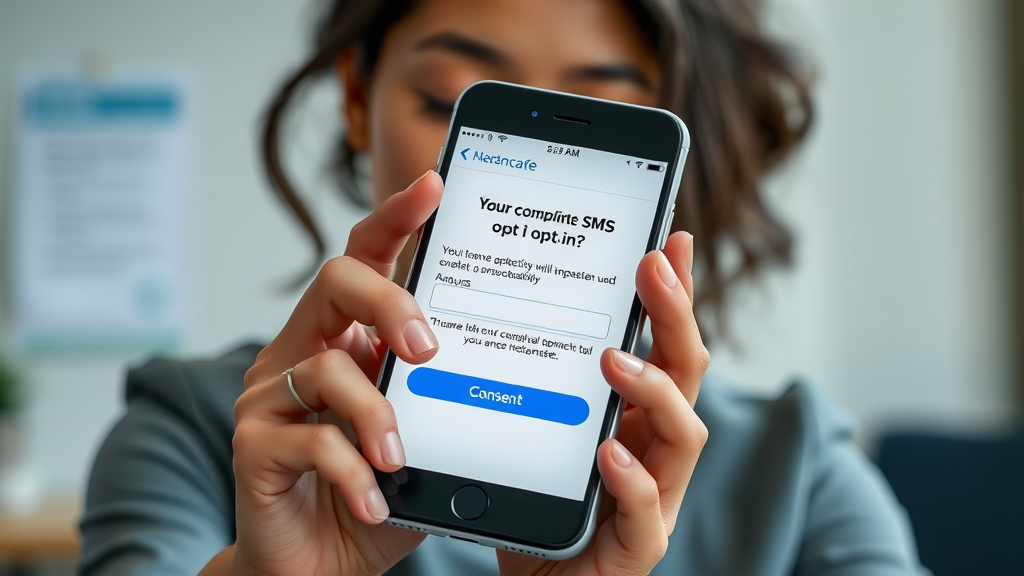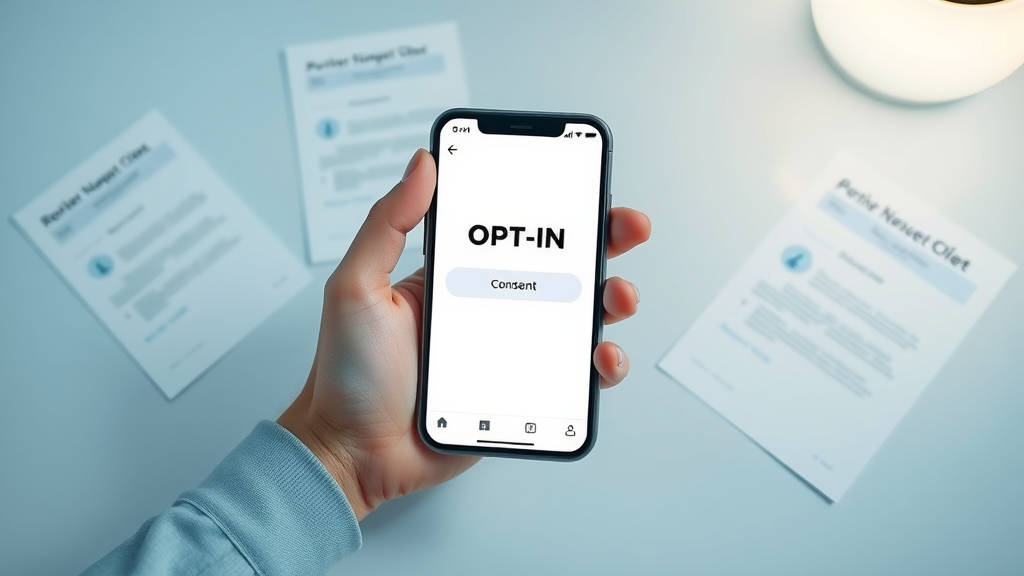Did you know? In 2023, U.S. businesses faced over $200 million in fines for SMS opt-in compliance violations—some for sending a single unsolicited text message. Avoiding these penalties requires more than technical know-how; it demands a clear understanding of evolving laws in text marketing. This comprehensive guide will equip you with practical, legally sound steps to ensure your sms opt-in compliance is bulletproof, helping you protect consumers, safeguard your reputation, and maximize text message marketing ROI.

Why SMS Opt-In Compliance Matters: Understanding the High Stakes for Text Message Marketers
- According to industry watchdogs, fines for sms opt-in compliance and general sms compliance failures have risen by 50% year-over-year . For example, one retailer was fined $80 million for neglecting to obtain express written consent before launching a promotional message campaign.
- Businesses that ignore SMS opt-in compliance face not only financial penalties, but also damaged reputations, loss of customer trust, and in some cases, lawsuits. Even a single non-compliant text message can trigger scrutiny, leading to expensive settlements and the risk of being barred from future mobile marketing.
- Legal authorities like the FCC and FTC have ramped up enforcement, tightening rules around sms opt practices and express written consent for all promotional messages. As consumers grow more privacy-aware, the legal spotlight on text messages and text marketing will only intensify.
Achieving SMS Opt-In Compliance: Quick Tips and Legal Foundations
- The legal landscape for sms opt-in compliance is shaped by core regulations: the Telephone Consumer Protection Act (TCPA) in the US, CTIA Messaging Principles , and the General Data Protection Regulation (GDPR) in the EU. Each places strict requirements on consent, disclosure, and privacy policy communication in text messages and text marketing.
- It is essential to secure explicit sms compliance and written consent—preferably via a double opt process—before launching any sms marketing campaign. This means you must present a clear disclosure, obtain documented permission to text, and ensure consumers understand the purpose and frequency of your promotional messages.

| Region | Key Law | Express Written Consent Required? | Restrictions on Promotional Message |
|---|---|---|---|
| United States | TCPA | Yes, for marketing texts | Must disclose frequency, terms, and provide opt-out; fines for violations |
| European Union | GDPR, ePrivacy | Yes, explicit and informed consent | Strict consent storage; must allow easy withdrawal and detail purpose |
| Canada | CASL | Yes, for CEMs including SMS | Identification, consent logs, unsubscribe in every message |
Defining SMS Opt-In: What Every Text Message and SMS Marketing Program Needs
- A single opt-in means a user enters their phone number and receives text messages with only basic confirmation—this is less secure and less compliant. The double opt-in method is safer: users submit their number, then receive a follow-up text message requiring confirmation before they’re added to your sms campaign or text marketing list.
- Always document express written consent: save time-stamped logs, IP addresses, and screenshots of the consent flow. This is vital if you ever need to prove permission to send promotional messages for regulatory audits.
- The compliant sms opt-in flow should be: disclosure → user submits phone number → send confirmation message → receive explicit reply ("YES") → launch sms marketing campaign. Every subsequent text message should reference how to opt-out.

Key Elements for Effective SMS Opt-In Compliance in Text Messaging
- Your sms opt-in request must include specific required language for compliance. This means: clear disclosure of promotional messages, estimated text message frequency, mention of message/data rates, a direct link to your privacy policy, and clear instructions to opt out.

- Use direct, simple written consent language: "By texting YES, you consent to receive text messages from OurCompany about promotions. Message/data rates may apply. Reply STOP to cancel. View our privacy policy at [link]." This keeps your sms marketing both effective and legally sound.
"Obtaining express written consent is not just a regulatory checkbox; it’s your primary defense against costly sms compliance violations." — SMS Compliance Industry Expert
Common Pitfalls: SMS Compliance Mistakes and How to Avoid Them
- Top missteps include sending marketing messages with unclear opt-in language, failing to collect express written consent, or omitting required disclosures. These gaps can turn a well-intentioned sms campaign into a compliance nightmare.
- One common example: "Get 20% off now! Reply YES for deals." This lacks a privacy policy link, opt-out instructions, and explicit statement of marketing intent—making it non-compliant and exposing businesses to fines and consumer complaints.

Best Practices for Managing SMS Opt-In and Text Message Consent
- Keep audit-ready records: Store detailed logs of every sms opt event, including IP, timestamp, and consent text.
- Use double opt-in: Require customers to verify their intent by responding to an initial text message before campaigns begin.
- Make opt-out simple: Always include "Reply STOP to unsubscribe" in every promotional message, and act on requests immediately.
- Routinely update sms opt lists and audit your text message flows to ensure ongoing sms compliance. Use tools that flag gaps in express written consent or missing privacy policy links to stay proactive.
- Integrate your sms opt processes with your CRM or marketing automation software, so every consent—and withdrawal—is logged, tracked, and managed efficiently.

Crafting SMS Opt-In Templates: Examples for Text Messages and SMS Campaigns
- Retail Template: "Text YES to 12345 to get exclusive offers from ShopSmart. Msg & data rates may apply. 4 msgs/mo. Reply STOP to cancel. Privacy: shopsmart.com/privacy"
- Healthcare Template: "Text JOIN to 67890 to get appointment reminders from Healthy Clinic. Consent required for health updates. Reply STOP to end. Privacy: healthyclinic.com/policy"
- Finance Template: "Consent to receive text messages on updates & alerts from SecureBank. Msg rates may apply. Reply STOP to stop. See privacy policy: securebank.com/privacy"

- Customize your opt-in template for industry or regulatory demands. For example, healthcare must reference HIPAA compliance, while finance should include language about protecting sensitive personal data during promotional sms message flows.
Maintaining SMS Compliance: Monitoring, Audits, and Legal Updates
- Conduct regular audits: Review message logs, opt-in workflows, and consent records for your sms marketing campaigns. Document everything, so audits run smoothly and you’re always ready to prove sms opt-in compliance.
- Leverage sms compliance monitoring tools. These platforms automatically scan for messaging errors, missing consent language, and help you keep current with regulatory changes—protecting you from potential legal advice missteps.

- Stay alert to new laws. Text message regulations are changing rapidly; subscribe to legal updates and train your marketing staff to adapt your sms opt and text messaging process accordingly.
Troubleshooting: Resolving Issues in SMS Opt-In and SMS Compliance
- If you suspect a violation (for example, a customer receives a promotional message without express written consent), halt the campaign immediately, review your records, and notify your compliance officer for legal advice.
- Pause all non-compliant text messaging flows.
- Audit the affected phone numbers for missing opt-in records or unclear consent to send.
- Reach out to those impacted with a compliant message explaining the oversight, offer an immediate opt-out, and update your internal sms opt logs.
- Case Study: A national retailer discovered a batch of marketing messages were sent without express written consent due to a CRM error. By quickly halting sends, auditing logs, and re-obtaining permissions, they avoided an expected $1.5 million fine—proving that swift action is key to sms compliance.
Understanding Express Written Consent in SMS Opt-In Compliance
- There’s a key distinction: written consent can be as simple as checking a box, while express written consent is a clear, unambiguous agreement—often captured via reply text, digital signature, or certified checkbox before sending promotional messages.
- By law, you must collect, store, and be able to reference express written consent for every phone number in your sms marketing database. Keep electronic records and backup files, and audit these regularly for full compliance with consumer protection laws.
People Also Ask: SMS Opt-In Compliance Insights
What is SMS opt-in requirement?
- SMS opt-in means a person gives clear permission for a business to send them text messages. Legally, this requires transparent disclosure and—especially for promotional messages—express written consent, which helps protect consumers from unwanted texts.
- Businesses must clearly explain what type of messages will be sent, collect affirmative consent, and offer simple opt-out options. It’s best practice to save all consent-related records for future proof of sms compliance.
What is SMS compliance?
- SMS compliance covers all the legal rules around sending text messages, including how to obtain consent, disclose message frequency, and handle privacy policy requirements. Both businesses and individuals sending marketing text must follow national and, sometimes, international laws.
- The Telephone Consumer Protection Act (TCPA), CTIA, GDPR, and related regulations mandate express written consent for promotional message campaigns, with steep penalties for non-compliance in sms opt or text messaging flows.
Do employees have to opt-in for text messages?
- If businesses text employees as part of work communication (not marketing), internal opt-in policies are strongly recommended. Consent is still essential to respect workplace privacy, and compliance standards apply if the sms message qualifies as marketing or impacts employee privacy.
- Always clarify internal sms opt flows and document employee permissions, especially if texts include personal, sensitive, or promotional information.
What is an example of an opt-in SMS message?
- A compliant opt-in message might read: "Text YES to receive coupons & updates from BestShop. Msg/data rates may apply. Max 4 msgs/mo. Reply STOP to opt-out. Privacy policy: bestshop.com/privacy."
- This example includes disclosure, estimated frequency, privacy policy link, consent to send, and opt-out instructions—all vital elements for sms opt-in compliance in promotional messages.
Frequently Asked Questions About SMS Opt-In Compliance
- What are the penalties for sms opt-in non-compliance? Fines range from $500 to $1,500 per text message under the TCPA, with higher penalties for willful violations. Some class action lawsuits reach multi-million-dollar settlements.
- How should businesses document sms opt-in consent? Use consent logs, timestamps, IP addresses, and save original consent messages. Regularly audit and update these records for ongoing compliance.
- Can I use one opt-in for all marketing channels? No. Each marketing channel—such as email, text message, and push notification—requires separate, channel-specific consent under most sms compliance laws.
Summary and Next Steps for Mastering SMS Opt-In Compliance
- SMS opt-in compliance is the foundation of responsible text message marketing—protecting both businesses and consumers, and avoiding costly legal exposure with each sms message sent.
- Implement best practices: use clear, compliant opt-in language, double opt approaches, and robust audit trails. Stay updated with new regulations to keep your text marketing safe and effective.
 Add Row
Add Row  Add
Add 




Write A Comment